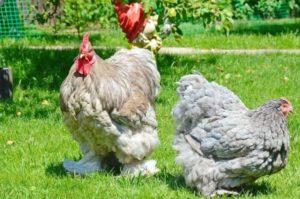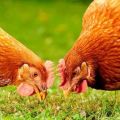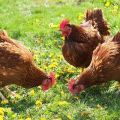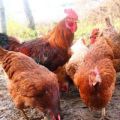Characteristics and description of Loman Brown chickens, productivity and maintenance
Loman Brown chickens are of the egg type. They are raised for eggs. The birds are light brown in color and light in weight. In the first years of life, chickens lay every day. For 2-3 years, egg production decreases, so the flock is updated with young chickens. Birds have good immunity, calm nature, eat various cereals, raw and boiled vegetables, greens.
Description and characteristics of the Loman Brown breed
Chickens Lohmann Brown is an egg breed of poultry, bred in the last century in Germany. Chickens are bred to produce eggs. The meat quality of such a bird is low. Loman Brown chickens are genetically based on high egg production.
In addition to increased productivity, this breed of birds has another useful feature - it can take root in any climatic zone. However, it is impossible to obtain full-fledged offspring from eggs at home. The breed is bred from 4 hybrids, young birds are bred by pedigree poultry farms. In order to raise Loman Brown chickens, you need to buy young or hatching eggs.
Appearance
Adult laying hens weigh 1.9-2.1 kilograms, roosters - no more than 3 kilograms. In birds, the color of feathers is light brown, with a reddish tinge, there may be light or dark feathers in the tail, wings and around the neck. Chickens have a neat physique, light bones. The plumage is dense, the tail and wings are well developed. The birds of this breed have a small head with a bright red crest and round earrings.
Character of chickens
Birds of the Loman Brown breed are active, but not aggressive. Their character is calm, not shy. Roosters rarely fight and do not divide territory. Loman Brown chickens have a good appetite. They are kept separate from other poultry due to their low weight. Of the 100 chickens, 96 survive. Birds are unpretentious in care, adapt well to any conditions of keeping.
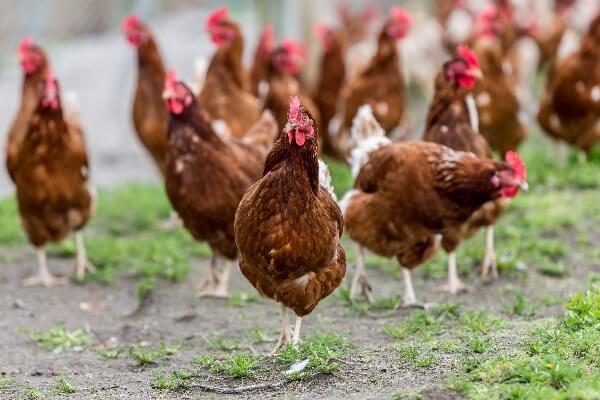
Egg production and when they start to lay
Loman Brown chickens start laying very early - at the age of 21 weeks. Egg production of one chicken lasts 80 weeks. The weight of the bird during this period is only 1.7-1.9 kilograms. In the first year of life, one hen produces 310-320 eggs weighing 63-64 grams. If chickens are provided with at least 14 hours of daylight, they will lay every day, even in winter (except during moulting periods).
The eggs of Loman Brown chickens are light brown in color. In the second year, productivity decreases by 15 percent, in subsequent years it decreases by another 20 percent.
The older the chickens, the less often they lay, but the eggs themselves increase in size.
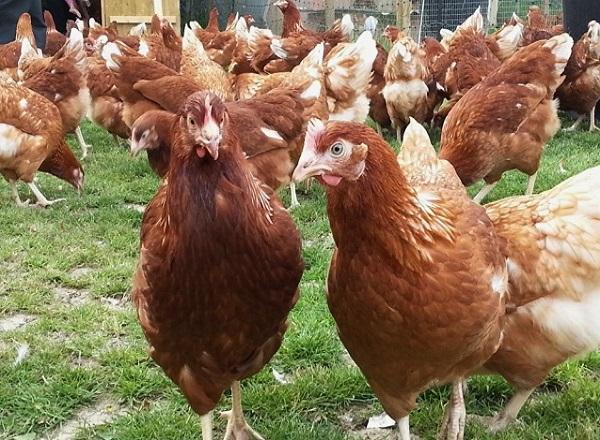
Growing costs and profitability
Loman Brown chickens are inexpensive (prices are in equivalent): hatching eggs - from $ 0.5, day-old chicks - from $ 2, juveniles 4.5 months old, ready to lay eggs - from $ 10. Chickens are laying for only 2 years. After the end of the egg production period, they can be used for meat.
The costs of growing include the cost of feed (about $ 1-2 per month), vaccines, vitamins, utility bills associated with keeping birds. One hen will lay 25 eggs per month for a total cost of $ 2-3. Usually at least 10-20 birds are raised at a time. The cost of keeping chickens is fully paid off by the cost of the eggs.
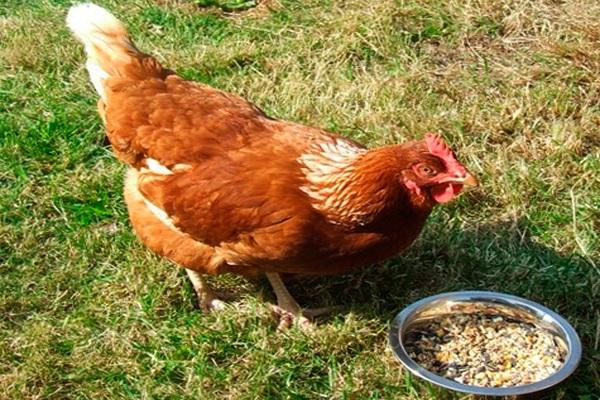
Main pros and cons
The advantages of breeding Loman Brown chickens:
- rapid growth and puberty of the bird;
- high productivity;
- unpretentiousness in care and maintenance;
- high rates of offspring survival;
- excellent quality eggs.
Disadvantages of breeding birds of the Loman Brown breed:
- the egg production of one layer lasts only 80 weeks;
- it is impossible to get pedigree offspring at home;
- you cannot overfeed the bird, otherwise it will begin to gain weight and stop rushing daily.
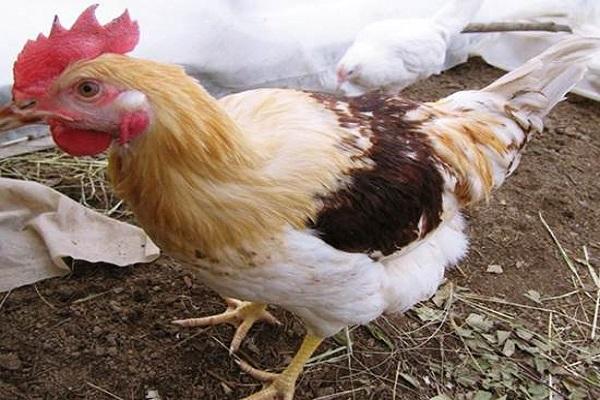
Features of keeping roosters and layers
At home, Loman Brown chickens are kept in cages or open enclosures on the floor. The stocking density is 6-8 individuals per 1 square meter. In the poultry house, perches and nests for egg-laying must be equipped. For 20 birds, the minimum size of a chicken coop is 10 square meters.
Requirements for the place of detention
Loman Brown chickens can be kept indoors throughout the laying period. In households, when a small number of birds are raised, they usually set up a poultry house and an outdoor area for walking.
The room where chickens are kept must be warm, have windows for light access, doors. The windows are protected from the inside with a metal mesh. Straw or sawdust is spread on the floor of the room in which the chickens are kept. You should constantly monitor the cleanliness and dryness of the litter.
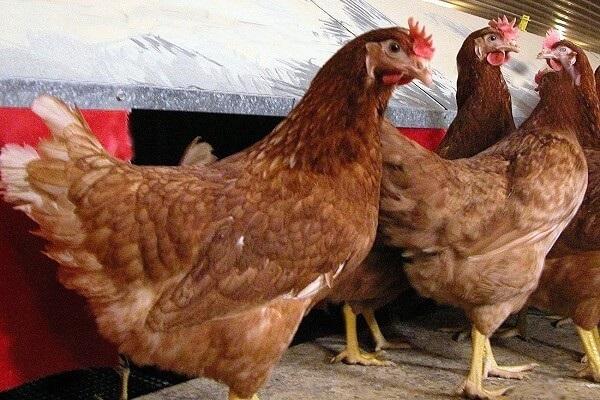
There must be roosts in the house. These can be wooden blocks 5 centimeters thick and 1-2 meters long, located at least 50 centimeters above the floor level. Chickens sleep on perches.
In order for laying hens to be able to carry, nests are equipped with them. These can be wooden crates or wicker baskets. The nests are lined with soft straw or sawdust. Placed at a height of 50 centimeters from the floor. For 4-5 hens, 1 nest is made.
Lighting and temperature
The hen house is equipped with a heating and lighting system. The air temperature in the house should be 18-22 degrees Celsius. When the temperature drops to 3-5 degrees below zero, chickens may have hypothermia and frostbite on the crest and earrings. In winter, the chicken coop needs to be heated. At temperatures below 10 degrees Celsius, chickens will not lay.
Daylight hours should be 13-14 hours a day. Lighting lamps are located at a distance of 2 meters from the floor. The house is artificially illuminated only in the autumn-winter period.
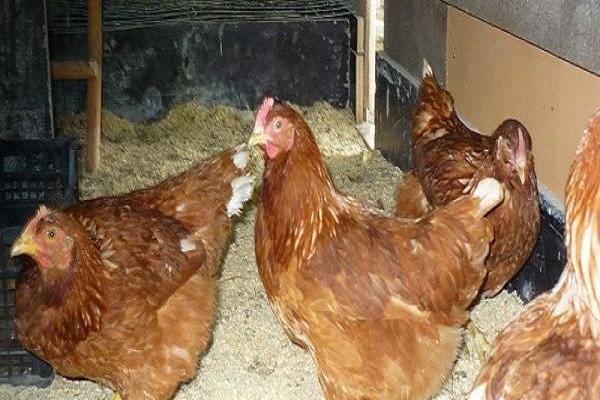
Preparing a walking yard
Chickens will be less sick if they can go outside daily. Having the opportunity to go out into the fresh air, the birds will be able to independently search for their own food, take sun and air baths, and will carry eggs that are more complete from a biological point of view.
Chickens need to prepare the yard for walking. The site can be enclosed with a 2-meter high fence or the birds can be allowed to walk throughout the territory of the personal plot.In places for walking, there should be sand and ash, feeders with grain, drinkers with water and containers with lime. In winter, birds are released outside if the air temperature does not drop below 3-5 degrees below zero.
Installation of feeders and drinkers
For feeding and watering chickens, special devices are installed in the hen house. The feeders are arranged in such a way that the chickens cannot transfer them or leave droppings in them. Traditional long grooved wooden crates or plastic hopper feeders are used as feeding containers and can be placed on the ground or suspended from the ceiling.

Crushed grain or mixed feed is poured into the feeding container. In the hen house, you need to equip another feeder - for mineral fertilizing (limestone, chalk, salt). Any container can serve as a drinker: a plastic shallow dish, a ready-made vacuum or siphon drinker.
Molt and break in clutch
Loman Brown chickens usually molt in the fall, from October to December. Birds do not rush during molting. During this period, chickens have a decrease in appetite, they lose weight. After molting, the situation is normalized. Chickens start to rush as before.
Planned herd replacement
Loman Brown chickens are kept for eggs. Birds rush every day for 1-2 years. For 2-3 years of life, old chickens are replaced with young ones.
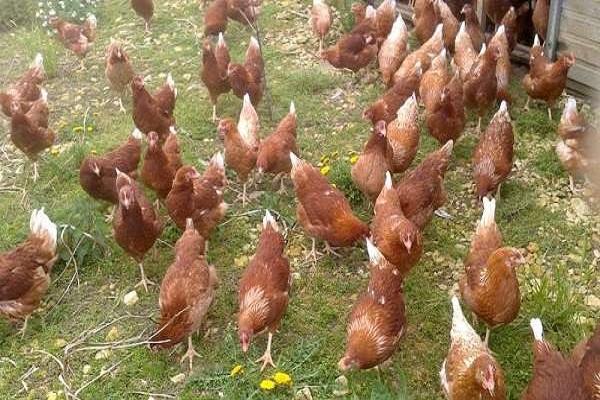
How to feed the bird?
The diet and feeding rates of Loman Brown chickens depend on the age of the bird. Laying hens are fed 2-3 times a day. Throughout the day, chickens are given different food, but little by little (20-30 grams each). The birds should not be overfeeded, otherwise they will become overgrown with fat and stop rushing.
Adult chickens
Whole grains are not recommended for adult birds. Such food is poorly digested. Grain is absorbed by the stomach within 6 hours. The grain feed needs to be refined. From grain, birds are given corn, barley, wheat, oatmeal, millet, sunflower and flax seeds, sprouted wheat. You can buy ready-made compound feed. One bird should receive 110-120 grams of compound feed or cereals per day.
Chickens are fed dry and wet food. Wet mash, made from steamed cereals and boiled vegetables, are given in the morning and afternoon. At night, chickens are fed with dry crushed grain.
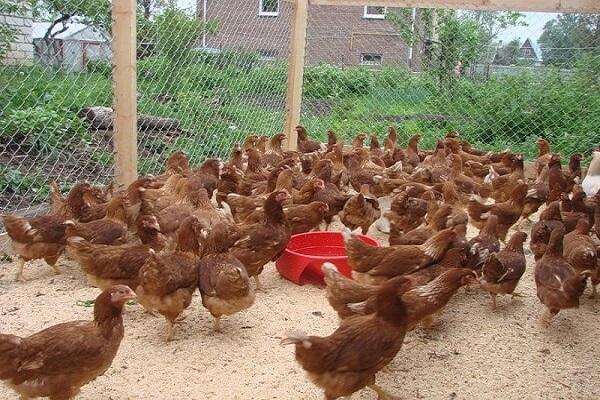
As an additional source of vitamins and minerals, chickens are given chopped vegetables and root crops: carrots, cabbage, pumpkin, turnips. In spring and summer, you need to put fresh herbs in the feeders: nettles, clover, alfalfa. Free-range chickens provide themselves with green food on their own. On the territory of the chicken coop, there must be a plate with limestone, chalk, salt. Chickens need to pour fresh water into drinkers daily.
Chicks
The small chickens that are born are fed immediately, food is given every 2 hours, even at night. Pour corn grits, boiled yolk mixed with semolina, boiled chopped nettle into the feeder. The drinker must always have clean water. You can give the chickens kefir, cottage cheese.
Weekly chicks are fed 7 times a day. They are additionally given millet, barley, wheat or oatmeal, as well as boiled potatoes, herbs, grated carrots. Mixed feed is added to the diet of monthly chickens. From 3 months old, chicks are fed like adult chickens.
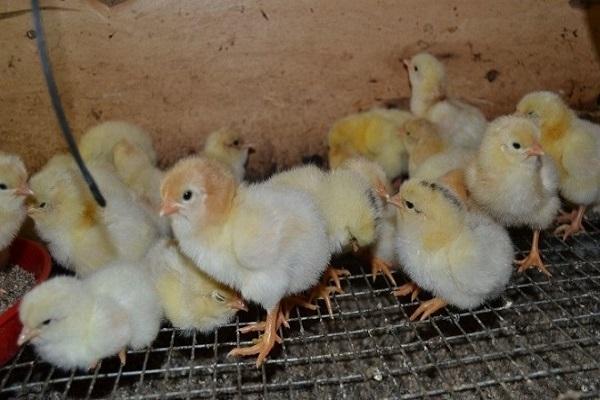
Breeding rules
Loman Brown chickens cannot be obtained from eggs laid by domestic hens. For breeding, hatching eggs or day-old chicks are bought from producers.
Incubation
To incubate chickens at home, you need to purchase a special apparatus that will play the role of a brood hen. The incubator must maintain the optimum temperature for chick development. Fresh, clean, without cracks eggs are laid in the trays with the blunt end up. The incubator should warm up to 36-38 degrees before laying. The eggs are turned over from time to time. A container of water is placed in the incubator to maintain the desired humidity level.Chicks hatch on day 21.
Raising chickens
The hatched chicks are removed from the incubator and placed in a small box. The air temperature in the room should be 29-33 degrees Celsius. After 3 days, the temperature is lowered by 1 degree, the chickens are released on a warm floor.
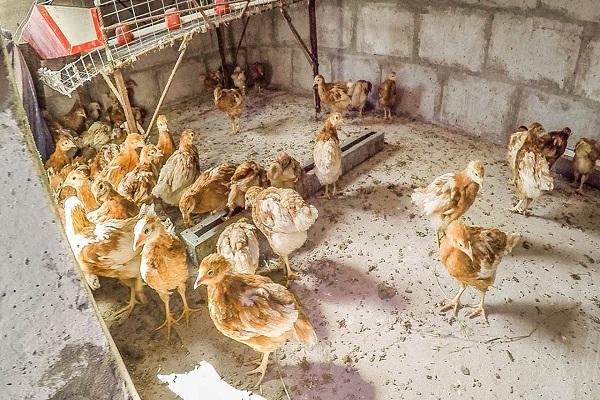
Daily chicks, 6 hours after hatching, are allowed to nibble on some corn grits. In the first 1-2 weeks after birth, chickens are not allowed outside. They are kept in a room with an air temperature of 25 degrees Celsius. Chicks need to be properly cared for: regularly feed, water, remove droppings and old feed.
Possible breeding problems
Healthy chicks are active, eat well and gain weight. If the chicks are cold, they have wet and dirty bedding, unbalanced nutrition, viruses and bacteria enter the weakened body. Chickens sit in one place for a long time, do not run, fall on their paws, lower their heads and wings.
Sick chicks are removed from healthy ones. They give them medicine or kill them. At an older age, chickens may stop laying during molting. After a month, egg production will return to normal. Poultry productivity is influenced by molting and natural aging.
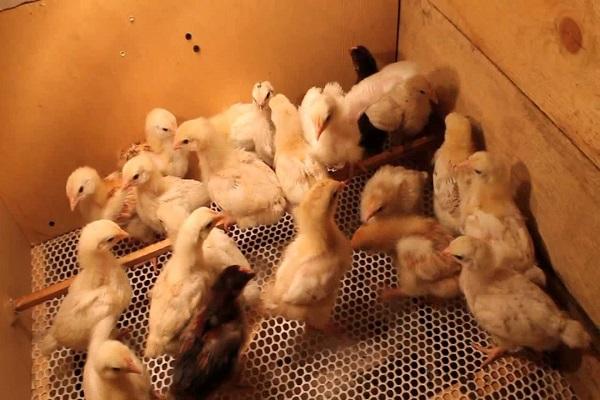
Diseases and methods of dealing with them
Lohman Brown chickens have good immunity. With improper care and poor nutrition, birds can get sick.
Common diseases and treatments:
- Coccidiosis is an infectious disease of the stomach in which birds become lethargic, sit in one place, eat poorly, vilify, and lower their wings. If you find signs of the disease, you should contact your veterinarian. Chickens are given antibiotics and drugs Koktsidiovit, Avatek, Sakoks.
- Ascariasis is a worm disease in which chickens become lethargic, eat poorly, and stop rushing. They are treated with the drug Piperazine (0.2-0.5 grams are diluted in 1 liter of water).
- Tuberculosis is an infectious disease in which birds fall to their feet, move little, eat poorly. Sick chickens are isolated from healthy chickens and killed.
Loman Brown chickens are the most profitable breed of birds, characterized by high egg production rates. Laying hens rush every day and eat as much as common hens. The only disadvantage of this breed is that birds do not reproduce naturally. Chicks or hatching eggs should be purchased every 2 years.
